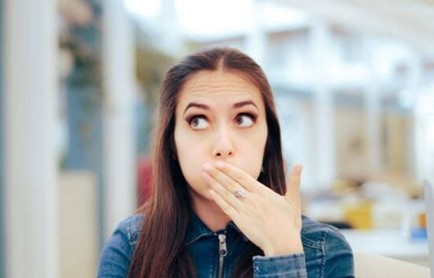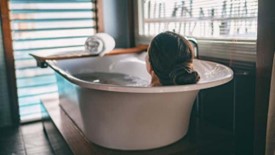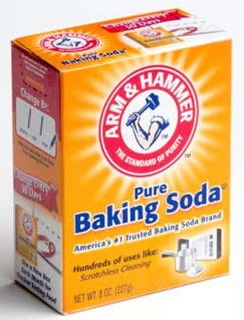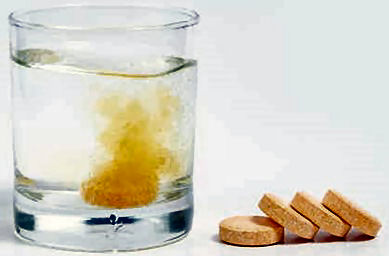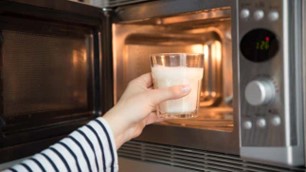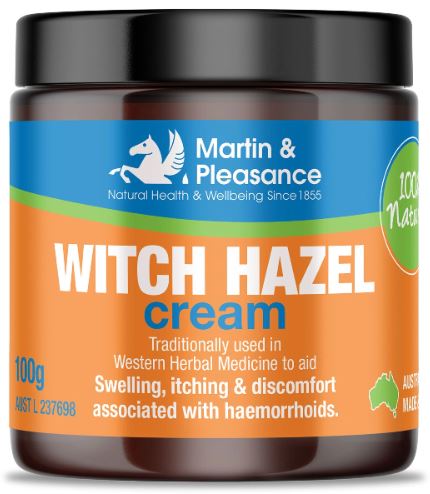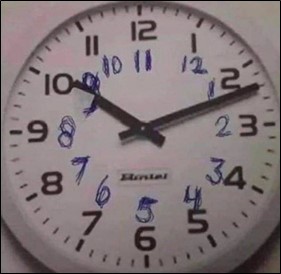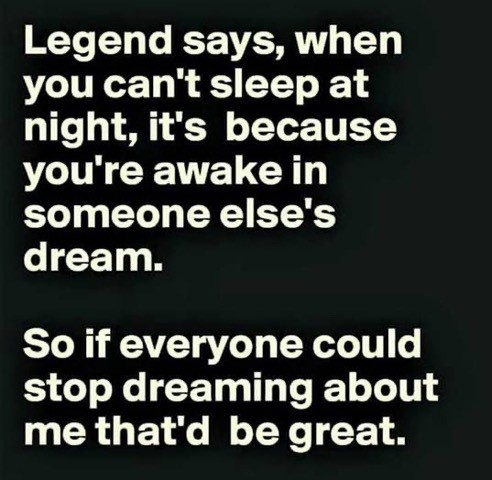|
|
|||
|
|||
|
Privacy Policy | Editorial Policy | Profit Policy | Join the Association | List of Members | Contact us | Index | Links |
|||
|
Back Go to page: 1 2 3 4 5 6 7 8 9 10 11 12 13 14 15 16 17 18 19 20 Forward |
|||
| Veterans and Veterans Families Counselling Service (VVCS) can be reached 24 hours a day across Australia, for crisis support and free and confidential counseling phone 1800 011 046. VVCS is a service founded by Vietnam Veterans.
|
|||
|
Health and Life-style. |
|||
|
|
|||
|
Contents:
15 popular home remedies - and do they work? Hiccups explained - and how to get rid of them. Sleep - why it's so important. Testerone patch to solve a women's low libido. Your liver - and what it does.
|
|||
|
Hiccups explained – and how to get rid of them.
A hiccup is a short and involuntary contraction of the diaphragm muscle. When this muscle contracts, the opening between the vocal chords snaps shut to stop the inflow of air. This sudden closing causes the hiccup sound.
This contraction is caused by an irritation of the nerves that extend between the neck and the chest. The medical term for hiccups is singultus which derives from the Latin word singult which means “to catch ones breath while sobbing”.
There are a number of potential causes for this contraction:
Hiccups can occur at any time, even babies in the womb have been seen to be hiccuping. Although hiccups will normally go away by themselves with no ongoing side-effects, a number of home remedies for hiccups do actually work. You can drink a glass of water quickly, hold your breath, pull hard on your tongue or even have someone scare you.
You could also try the Valsalva manoeuvre. Originally designed to slow a racing heartbeat, the Valsalva manoeuvre has also been shown to stop hiccups. To start, take a big breath and then hold your nose and close your mouth. While still keeping your mouth and nose closed, push out your breath and hold for 15-16 seconds. Open your nose or mouth and breathe out.
While hiccups normally aren’t a reason for concern, if they become persistent, frequent, interrupt your ability to eat or sleep, cause you to throw up or feel severe pain, last more than three hours or make you feel as though you can’t breathe, you should seek medical attention.
|
|||
|
|
|||
|
|
|||
|
15 popular home remedies and whether or not they actually work
Some of our favorite remedies really do work, but others seem to just be harnessing the placebo effect. Here are some:
Epsom salt baths
Epsom salts, or magnesium sulfate (no relation to table salt) are also known as “bath salts” because they are often dissolved in a warm bath to soothe sore muscles. There’s no evidence that your body absorbs any of the minerals through your skin, though, so don’t think of these baths as medicinal. That said, warm baths can feel good on sore muscles and scented bath salts are a great way to make a relaxing experience more pleasant.
Baking soda for heartburn
If you have heartburn or “indigestion,” an alkaline substance like baking soda can sometimes help to relieve your symptoms but baking soda is not the best choice. It can make you feel even more uncomfortable because of the way it expands in your stomach and it’s not appropriate if you’re trying to avoid sodium in your diet (its scientific formula is sodium bicarbonate). Better to grab a different type of antacid, like Gaviscon or Tums or Mylanta.
Vitamin C for colds
If you chug orange juice or take vitamin C pills when you have a cold, you’re not alone but the idea that vitamin C boosts your immunity never had very strong evidence behind it and it hasn’t stood up very well to scientific studies.
People who regularly take vitamin C may have slightly shorter colds than people who don’t, by just a few hours, but even in that case, starting to take vitamin C after you get sick doesn’t seem to help.
Warm milk for sleep
The US Sleep Foundation says that warm milk “may” help you sleep and that’s about the strongest recommendation you’ll find. People tend to find a cup of warm milk soothing, but the usual explanation, that the tryptophan in the milk makes you sleepy, doesn’t add up. There isn’t that much tryptophan in milk and there’s no easy way for it to get into a place where it can send sleepy messages to your brain. Another theory holds that warm milk’s power is all in its association in our mind:
We think it will make us sleepy, so it gets us in a sleepy mood.
Witch hazel for hemorrhoids
Witch hazel is a plant, but you probably know it from the liquid extract you can buy at the chemist. Witch hazel is an astringent, meaning it dries out and temporarily tightens skin or other tissues. There isn’t much evidence on witch hazel for hemorrhoids, but what there is suggests it may reduce itching, pain and bleeding. To use it, put some witch hazel on a cotton pad or a piece of toilet paper and pat it on. You can also buy wipes or pads that are already treated with witch hazel.
Ginger beer for nausea.
When you feel like you’re going to throw up, ginger beer can be a comforting thing to drink. But does it actually help nausea? There is some evidence that ginger root may help with nausea from pregnancy or after anesthesia but it doesn’t seem to help nearly as much with the nausea that comes from illness. Some ginger beer may not contain real ginger root at all, or the dose might be very small so if ginger beer helps you feel better when you’re sick, chances are it’s more about the comfort and familiarity and placebo effect—which means you’re free to drink a different beverage if you prefer.
Feed a cold, starve a fever.
This is an archaic idea, from the era when body fluids and functions were categorized as to whether they are “hot” or “cold.” Fevers are hot and blood was considered to hold heat, so bloodletting was part of how you would treat a fever. The idea of “starving” a fever was inspired by the same idea: Remove your body’s fuel and the fire won’t burn as hot. On the other hand, if you’re leaking mucus from your nose, you have a “cold” and the treatments would be entirely different.
We know now that colds are caused by viruses and that a fever is one way our body may respond to an infection (by a virus or otherwise). You can have a “cold” and a fever at the same time. You also can’t bring down a fever by fasting, even if you wanted to. So whichever you have, eat normally (if you can) to provide your body with the nutrients it needs.
Cranberry juice for Urinary Tract Infection (UTIs)
Cranberry juice is rumoured to be able to prevent or even treat urinary tract infections. So is the rumour true?
Studies have not found that cranberry juice can treat a UTI, so if you’re already feeling the burn, go to your doctor care rather than the grocery store. As for prevention, the jury is still out.
The American College of Obstetricians and Gynecologists’ top tips for UTI prevention are even simpler, stay hydrated, pee when you feel the urge and wash the skin around your anus and genital area. (Peeing after sex does not make the list, either.)
Ice for a bruise.
If you just whacked your shin on something and are pretty sure it’s going to bruise, ice can help to keep the swelling down and reduce the eventual size of the bruise.
Chamomile tea to help you sleep.
As famous as chamomile tea is for helping people get to sleep, one chamomile-containing blend is even sold as Sleepytime Tea, the evidence is minimal. One 2019 review of six studies found that chamomile improved sleep quality, but didn’t help people with insomnia to get more sleep. If you find it relaxing, enjoy; but if it doesn’t seem to be working...it’s probably not.
Cucumber slices for puffy eyes.
Cucumber slices over the eyes are an iconic beauty treatment, but there isn’t any clinical evidence supporting this practice with cucumbers specifically.
Cucumbers contain plenty of nutritious chemical compounds, like vitamin C, but is there enough of them to do anything when applied topically? That’s pretty unlikely.
Instead, it seems that what we’re doing when we put cucumbers on our eyes is that we’re applying something cool and wet, which can feel good and may very slightly reduce puffiness temporarily, but if you don’t want to waste a cucumber, you can just use a cool gel pack or wet washcloth.
Aloe for burns.
Aloe-containing lotions can be soothing on a burn and it’s not uncommon to keep an aloe plant around so you can break off a leaf when you burn yourself in the kitchen, but is the aloe really doing anything special?
Studies have been inconclusive. It seems like aloe may be a good substitute for other burn ointments in places where those other ointments aren’t easily available. Aloe provides a moist covering to the wound, which helps healing. The American Academy of Family Physicians says the best treatment for a minor burn is to run it under cool water for 20 minutes. After that, you can apply “aloe vera cream or antibiotic ointment.” If the burn is deep, if it blisters, or if it is in a sensitive area of the body like the genitals or face, seek medical help.
Sex to relieve menstrual cramps.
There’s lots of anecdotal evidence that sex can relieve cramps, which means that people have tried it and said it works, but if you’re looking for studies to support the idea, there doesn’t seem to be anything out there. Doctors have often gone on the record saying that endorphins or oxytocin from an orgasm can potentially relieve cramps, but oxytocin can also increase cramping, meaning you shouldn’t expect it to be a guaranteed cure. Sex can sometimes cause cramping all on its own, especially if the cervix is touched during sex.
So this one falls squarely into the “try it and see” category. If sex (partnered or solo) helps your cramps, then great! But if it doesn’t, that doesn’t mean anything is wrong.
|
|||
|
|
|||
|
|
|||
|
Testosterone patch could solve low libido problems.
For many, mention of the hormone testosterone triggers thoughts and discussions about men and ‘manliness’ but falling levels of testosterone during menopause can affect women’s libido.
Help is potentially at hand, though, with a clinical trial of a new testosterone patch taking place in the UK this year. The patch will provide a slow release of the hormone and is designed especially for those who saw no improvement through hormone replacement therapy (HRT). Until now, women in this situation have relied mainly on testosterone creams and gels applied to the skin. Testosterone is also available as a capsule or tablet, but is generally not recommended for women or men, as oral forms can have unwanted effects on blood cholesterol levels.
Testosterone creams and gels, many of them were designed for use by men, come with inherent problems. Chief among these is that application through the skin via a cream makes it difficult to get dosage levels right and, like most other creams and gels, testosterone-based ones can be transferred onto other surfaces or materials, such as clothing. This can happen either during application, or after being applied to the skin. That could all change if the UK trials prove successful.
Leading the way with the trials is the University of Warwick, they hope this will transform life for women suffering from post-menopause issues nationally and indeed globally. It is a very exciting development; the potential of which should improve women’s lives. It will offer women more choice.
Is there really a link?
For those whose quality of life has been affected by loss of libido, testosterone patches sound like an ideal solution, however, some doubt remains about a causal link between the two. According to the Australasian Menopausal Society (AMS), the science to date has not provided a definitive answer: Some studies have indicated that there may be an association between low sexual desire and low testosterone, but this has not been a consistent finding in all studies. The AMS website also points out that “there is no blood level that can be used as a cut-off to ‘diagnose’ low testosterone in women. On the other hand, the UK’s National Institute for Health and Care Excellence has, since 2015, had guidelines recommending testosterone supplementation be considered for menopausal women with low libido if HRT alone is not effective.
The work they’re doing at Medherant and at Warwick isn’t just theoretical, but instead aimed at a problem women are facing that can drastically affect their everyday lives and jobs. The trials could deliver a product that is much needed and is just not available. With the technology already proven to work, they hope their new patch will remove needless misery from women’s daily lives.
|
|||
|
|
|||
|
|
|||
|
Your liver and what it does.
|
|||
|
|||
|
|
|||
|
Sleep – why it’s so important.
Tossing and turning. Trouble falling asleep. Trouble staying asleep. Insomnia isn't only frustrating; it can also affect your health.
Insomnia is unsatisfying sleep; difficulty getting to sleep; difficulty staying asleep, getting up earlier than you wanted to feel fulfilled. When that starts happening more than three times per week for more than three months, then you could have a chronic insomnia disorder.
People with those kinds of symptoms should be thinking about seeking help for a possible sleep disorder. Another common sleep disorder is obstructive sleep apnea syndrome which is usually associated with loud snoring.
There's health consequences with not getting enough sleep. When we're getting less than about six to six and a half hours of sleep a night, the risk of certain bad health things start to crop up. Hypertension, diabetes, obesity, heart disease and as you get down to very short amounts of sleep, associated with increased risk of death.
There’s an interesting video on sleep disorders below, you should watch it.
|
|||
|
|
|||
|
|
|||
|
|
|||
|
|
|||
|
|
|||
|
Back Go to page: 1 2 3 4 5 6 7 8 9 10 11 12 13 14 15 16 17 18 19 20 Forward |
|||


